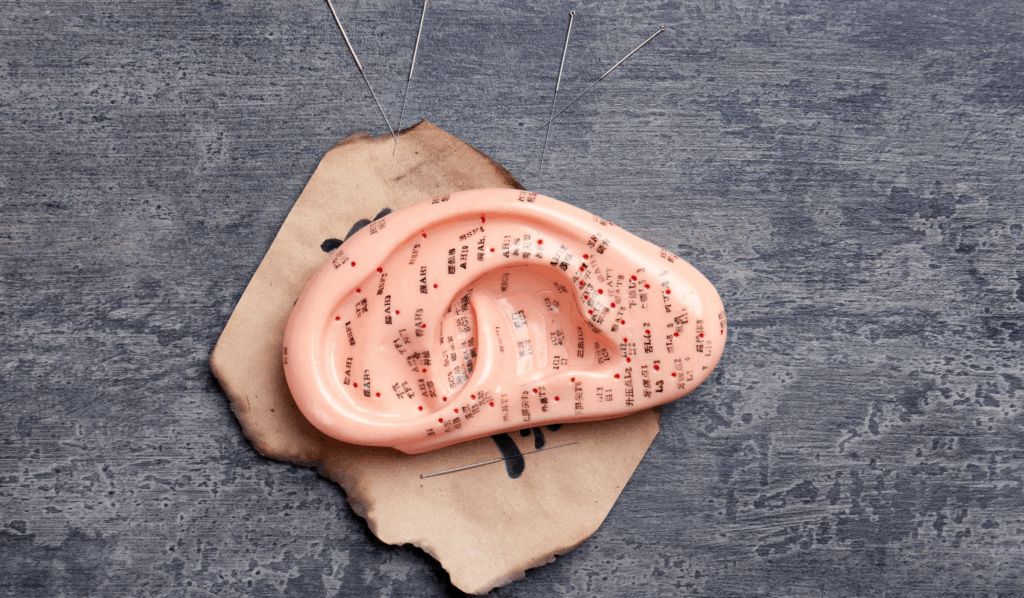

Auricular acupuncture, more commonly known as ear acupuncture, offers more than just a point of relief—it offers a full-body approach to healing through one of the smallest and most accessible areas of the body: your outer ear. This holistic therapy may seem subtle, but the effects it can have on your physical and emotional well-being are anything but. It’s increasingly used to help people who are dealing with everything from chronic pain and insomnia to anxiety, stress, and even addiction. The treatment itself is gentle and non-invasive, making it an inviting option for anyone seeking natural support in their wellness journey.
What makes auricular acupuncture especially unique is how it brings together traditional Eastern healing philosophies and modern scientific understanding. The concept is simple yet powerful: the outer ear reflects a microcosm of the entire body. By stimulating specific points with tiny needles, seeds, or light pressure, this method aims to rebalance internal systems and activate the body’s own capacity to heal. Whether you’re managing a health condition or simply want to feel more balanced, this method may offer the reset your body and mind have been asking for.
Auricular acupuncture, more commonly known as ear acupuncture, offers more than just a point of relief—it offers a full-body approach to healing through one of the smallest and most accessible areas of the body: your outer ear. This holistic therapy may seem subtle, but the effects it can have on your physical and emotional well-being are anything but. It’s increasingly used to help people who are dealing with everything from chronic pain and insomnia to anxiety, stress, and even addiction. The treatment itself is gentle and non-invasive, making it an inviting option for anyone seeking natural support in their wellness journey.
What makes auricular acupuncture especially unique is how it brings together traditional Eastern healing philosophies and modern scientific understanding. The concept is simple yet powerful: the outer ear reflects a microcosm of the entire body. By stimulating specific points with tiny needles, seeds, or light pressure, this method aims to rebalance internal systems and activate the body’s own capacity to heal. Whether you’re managing a health condition or simply want to feel more balanced, this method may offer the reset your body and mind have been asking for.
Auricular acupuncture targets the outer ear to influence full-body healing, using precise points that correspond to organs, emotions, and bodily systems.
Stimulation of ear points activates nerve pathways and the brain, helping regulate pain, mood, digestion, and stress through the vagus and other cranial nerves.
Auricular acupuncture offers relief for a wide range of physical and emotional issues, including chronic pain, anxiety, insomnia, hormonal imbalance, and addiction support.
Treatment is gentle, non-invasive, and adaptable to your needs, using tools like ear seeds, needles, or electrostimulation for lasting therapeutic effects.
Scientific studies show measurable benefits of ear acupuncture, including reduced pain, improved sleep, emotional balance, and stress hormone regulation.
Auricular acupuncture is a specialized therapeutic technique that focuses entirely on the ear—specifically, on the outer ear, also called the auricle. In Traditional Chinese Medicine (TCM), this area is believed to be a mirror of the body’s internal organs and systems. Each point on the ear corresponds to a different part of the body, much like foot reflexology. The entire body is represented here—head, heart, liver, spine, stomach—making the ear a powerful gateway to whole-body healing.
Practitioners use this microsystem to address physical and emotional issues by stimulating precise ear points with very fine needles, tiny metal balls, ear seeds (like the natural vaccaria seed), or even gentle electrostimulation. It’s a technique that can be applied as a standalone treatment or as a complement to full-body acupuncture. Regardless of how it’s used, the goal is the same: to promote healing, regulate the nervous system, and support the body’s own restorative functions.
The variety of techniques makes this method accessible to a broad range of clients—from those brand new to acupuncture to people with sensitivities or fear of needles.
You might wonder how stimulating the ear can possibly affect organs, emotions, or pain located far away from the ear itself. The answer lies in the complex network of nerves and reflex pathways that connect the ear to the brain and body. Specifically, several cranial nerves—like the vagus nerve, trigeminal nerve, and facial nerve—send branches through the outer ear. When these areas are stimulated, they activate parts of the brain involved in mood, stress response, pain perception, and bodily regulation.
The combination of traditional mapping and modern neural connections is why auricular acupuncture continues to gain traction in both Eastern and Western health circles.
Many people try auricular acupuncture with one specific goal—better sleep, less pain, calmer nerves. What they often discover is that treating the ear has ripple effects across the entire body. It doesn’t just mask symptoms; it aims to help rebalance the systems that caused them in the first place.
Because the ear is so densely packed with nerve endings, even small adjustments can result in profound shifts. People often report feeling calmer and more emotionally balanced within minutes of a session.
Auricular acupuncture is used in both clinical and wellness settings because of its broad range of applications. It doesn’t replace medical care but is often used as a complementary therapy to improve outcomes, reduce medication reliance, and ease side effects.

The outer ear is considered a microsystem of the body, meaning each part corresponds to an organ, gland, limb, or function. A commonly used visual reference is an inverted fetus curled within the ear, which helps identify reflex points. Stimulating specific zones can help regulate the corresponding areas—both physically and emotionally.
Below are some of the most commonly used auricular acupuncture points and their associated benefits:
| Auricular Point | Location on Ear | Primary Uses | Why It Matters |
| Shen Men (Heavenly Gate) | Upper triangular fossa (inside upper ear) | Calms the mind, relieves anxiety, supports sleep, reduces stress | Powerful for nervous system balance and emotional regulation |
| Point Zero | Root of the helix (ear ridge base) | Grounds and balances the entire body | Helps reset the body’s homeostasis and enhance the effects of other points |
| Sympathetic Autonomic Point | Junction of concha and helix root | Relieves stress, supports circulation, reduces inflammation | Excellent for calming overactive fight-or-flight responses |
| Thalamus Point | Center of the concha | Manages pain, reduces emotional intensity | Addresses both physical pain and psychological tension |
| Endocrine Point | Bottom of the tragus | Supports hormone balance, regulates glands (thyroid, adrenals) | Frequently used for PMS, adrenal fatigue, menopause, and stress-induced hormonal issues |
| Lung Point | Middle of the antihelix (inner ridge) | Boosts respiratory health, detoxification, and helps process grief | Supports lung function and emotional recovery—commonly used in quitting smoking |
| Liver Point | Upper antihelix | Aids detox, eases frustration, supports digestion and hormonal balance | Helps with mood swings, hormonal acne, liver overload, and PMS |
| Kidney Point | Lower lobule or base of the ear | Restores adrenal energy, eases fear, supports fertility | Key point for chronic fatigue, burnout, fertility concerns, and anxiety-related adrenal imbalances |
| Heart Point | Central concha ridge | Reduces palpitations, emotional distress, and blood pressure | Vital for emotional balance and cardiovascular health |
| Stomach / Appetite Control | Near tragus and inner ridge of ear | Regulates appetite, improves digestion, curbs emotional eating | Useful in weight loss programs and for supporting mindful eating habits |
If it’s your first time trying auricular acupuncture, expect a relaxing, low-pressure experience designed to meet you where you are—physically and emotionally. The environment is usually quiet and calming, with soft lighting, a comfortable treatment chair or bed, and a practitioner who takes the time to listen. Sessions are designed to be gentle, efficient, and easy to fit into your daily routine—even on a lunch break or at the end of a busy day.
The goal isn’t just symptom relief—it’s creating a space where your nervous system can reset. Most people describe the experience as deeply calming, and many walk away feeling lighter, clearer, or more centered—even after just one visit.
Your session begins with a conversation. Our practitioner will ask about your current symptoms, medical history, lifestyle habits, and any stressors or emotional challenges you’re navigating. This isn’t just about diagnosing a condition—it’s about understanding your whole story so the treatment can be tailored specifically to you.
Once your concerns are understood, our practitioner will examine your ears for active or sensitive points. This may involve gently pressing areas on your outer ear to identify tender spots or looking for subtle changes in color or texture. These cues help guide point selection based on your body’s current state.
Based on your comfort level and treatment goals, our practitioner at ACA Acupuncture and Wellness will customize your session using either ultra-fine needles or ear seeds. Needle insertion is typically gentle, with only a brief sensation of pressure. For those who prefer a needle-free approach, ear seeds may be applied instead—secured with adhesive tape to provide continuous stimulation after your visit.
With the points activated, you’ll be left to rest in a reclined position for about 20 to 40 minutes. This is a time for stillness. Many people close their eyes, drift into a meditative state, or even nap. The body uses this period to recalibrate and integrate the effects of the treatment.
The session ends with the gentle removal of the needles. If ear seeds are applied, our practitioner at ACA Acupuncture and Wellness will teach you how to press them throughout the day to enhance their effect. You’ll also receive personalized aftercare guidance and recommendations on how often to return, based on your individual needs.
Auricular acupuncture is designed for people looking for a gentle yet powerful way to support their health and emotional well-being. Whether you’re seeking alternatives to medication, navigating a stressful season, or simply curious about holistic therapies, this technique offers flexibility, safety, and results.
Because it’s non-invasive and highly adaptable, it’s suitable for most ages and conditions—with proper screening and professional care.
Auricular acupuncture is widely considered safe when performed by a qualified practitioner. At ACA Acupuncture and Wellness, our experienced practitioners ensure each session is tailored to your individual needs, minimizing risk and maximizing comfort. That said, like any therapeutic practice, it’s important to be aware of how your body might respond.
Working with a licensed practitioner ensures that all risks are assessed, and your treatment plan is designed safely around your needs.
Scientific research is building a strong case for auricular acupuncture as a meaningful therapeutic option for both physical and emotional conditions. In clinical studies on pain management, patients who received ear acupuncture after surgery reported reduced pain levels and required fewer pain medications during recovery. The technique has also been widely adopted in addiction recovery programs. The five-point protocol developed by the National Acupuncture Detoxification Association (NADA) has shown success in easing withdrawal symptoms and helping reduce cravings for substances such as opioids, alcohol, and nicotine.
In mental health settings, studies have observed improvements in symptoms of anxiety, emotional distress, and post-traumatic stress, particularly among individuals undergoing high levels of psychological strain. Sleep research has found that people struggling with chronic insomnia fell asleep more easily, stayed asleep longer, and experienced more restorative rest following a series of auricular treatments. Additionally, measurable decreases in cortisol levels have been recorded in individuals receiving ear acupuncture—pointing to its role in helping the body process and regulate chronic stress.
These findings continue to inform how auricular acupuncture is used in hospitals, community clinics, mental health programs, and wellness centers. Its adaptability, safety, and effectiveness make it a valuable part of whole-person care.
Auricular acupuncture is no longer limited to private practice or traditional acupuncture clinics—it’s now integrated into a wide variety of modern wellness settings due to its simplicity, affordability, and versatility. Community health initiatives often include ear acupuncture as a drop-in service to support populations dealing with chronic stress, trauma, or lack of access to ongoing care. In corporate environments, it’s used as a workplace wellness tool, offering employees quick and effective sessions that help reduce burnout and enhance mental clarity. Detox and rehabilitation centers frequently incorporate auricular acupuncture into their programming, where it serves as a calming, non-verbal intervention that supports emotional stability and complements counseling or group therapy.
Hospitals and surgical centers are increasingly offering ear acupuncture as part of preoperative and postoperative care, helping patients reduce anxiety and recover with fewer medications. It has also proven useful in emergency response situations, where practitioners provide rapid relief in disaster shelters, refugee camps, and humanitarian missions. The therapy’s minimal equipment requirements and non-invasive nature make it uniquely suited to these high-pressure environments. As awareness grows, auricular acupuncture continues to expand its reach as a practical, restorative modality for diverse populations seeking accessible, holistic care.
Ear seeds offer an accessible, ongoing way to reinforce the effects of your session—without requiring a clinic visit. They’re simple to apply, easy to manage, and effective enough to become a favorite wellness tool for many clients.
You may be sent home with a customized seed placement along with a chart or instructions to help you continue the work on your own time. After the session, you might feel more relaxed, centered, or even energized, depending on how your body responds to the stimulation.
When stress is high, sleep is broken, or emotions feel too loud to manage—auricular acupuncture offers a quiet place to begin again. With each point, the body is reminded how to restore its own rhythms, how to release what’s been held too tightly, and how to find balance again.
At ACA Acupuncture and Wellness, we approach ear acupuncture with the same care and precision that guides all our treatments. Whether you’re exploring holistic support for pain, anxiety, addiction recovery, or simply a better night’s sleep, our practitioners are here to listen, guide, and walk alongside you. It’s more than placing needles on the ear—it’s creating space for your system to breathe, recover, and return to center.
If you’re ready to explore how auricular acupuncture can support your well-being, contact us today. We’re here to help you reconnect with your body—one ear point at a time.
Sources:
Garner, B. K., Hopkinson, S. G., Ketz, A. K., Landis, C. A., & Trego, L. L. (2018). Auricular acupuncture for chronic pain and insomnia: A randomized clinical trial. Medical Acupuncture, 30(5), 262–272.
ScienceDirect. (n.d.). Auricular acupuncture. ScienceDirect Topics.
In auricular acupuncture, both ears contain the full microsystem of the body, meaning either ear can be used to address any organ or issue. One ear may be selected over the other based on factors such as dominant symptoms, handedness, or energetic patterns. In some approaches, the left ear is associated more with internal or emotional states, while the right is linked to external or physical experiences—though interpretations may vary depending on the tradition or method used.
An “active” point is typically identified through sensitivity, color changes, or subtle textural differences on the ear. These points may feel tender, warm, or firm to the touch. Active points often correlate with areas of imbalance in the body and are prioritized for treatment. They may also show heightened conductivity when assessed with electrodiagnostic tools.
Yes, the material of the seed can subtly influence the effect. Vaccaria seeds are natural and lightweight, commonly used for general stimulation. Metal beads, often stainless steel or gold-plated, may provide more focused or intense pressure. Some practitioners choose different materials based on client sensitivity, treatment goals, or the desired duration of stimulation.
Auricular acupuncture does not affect hearing function, as it targets external areas of the ear unrelated to the auditory canal or middle/inner ear structures. However, temporary tenderness or increased sensitivity at treatment points is possible, especially after initial sessions. This typically resolves quickly and is not harmful.
Maintenance frequency depends on individual needs and health goals. Some clients benefit from weekly sessions, while others may transition to biweekly or monthly appointments after noticing initial improvements. Recommendations often take into account factors like stress levels, chronic conditions, and lifestyle to help support long-term balance.
Yes, auricular points can reflect the body’s evolving needs. Hormonal shifts, life transitions, and emotional changes may activate different points on the ear. For example, during menopause or periods of high stress, points related to endocrine balance, sleep, and emotional regulation may become more sensitive or pronounced.
Auricular acupuncture may assist in addressing the underlying imbalances that contribute to hormone-related acne. By targeting points connected to the liver, endocrine system, and stress response, this therapy supports detoxification, hormonal regulation, and nervous system balance—all of which can impact skin health.
While ear seeds are safe and non-invasive, overstimulation can occur if they are pressed too frequently or worn for extended periods without proper guidance. This may lead to local irritation or tenderness. The typical recommendation is to wear the seeds for 3 to 5 days, followed by a rest period to allow the ear to reset.
LOCATIONS
MANHATTAN
QUEENS
NEW JERSEY
CALIFORNIA

The over $4 billion US acupuncture market offers a great opportunity with over 10% annual growth rates and a continuing flow of new patients interested in the benefits of acupuncture.